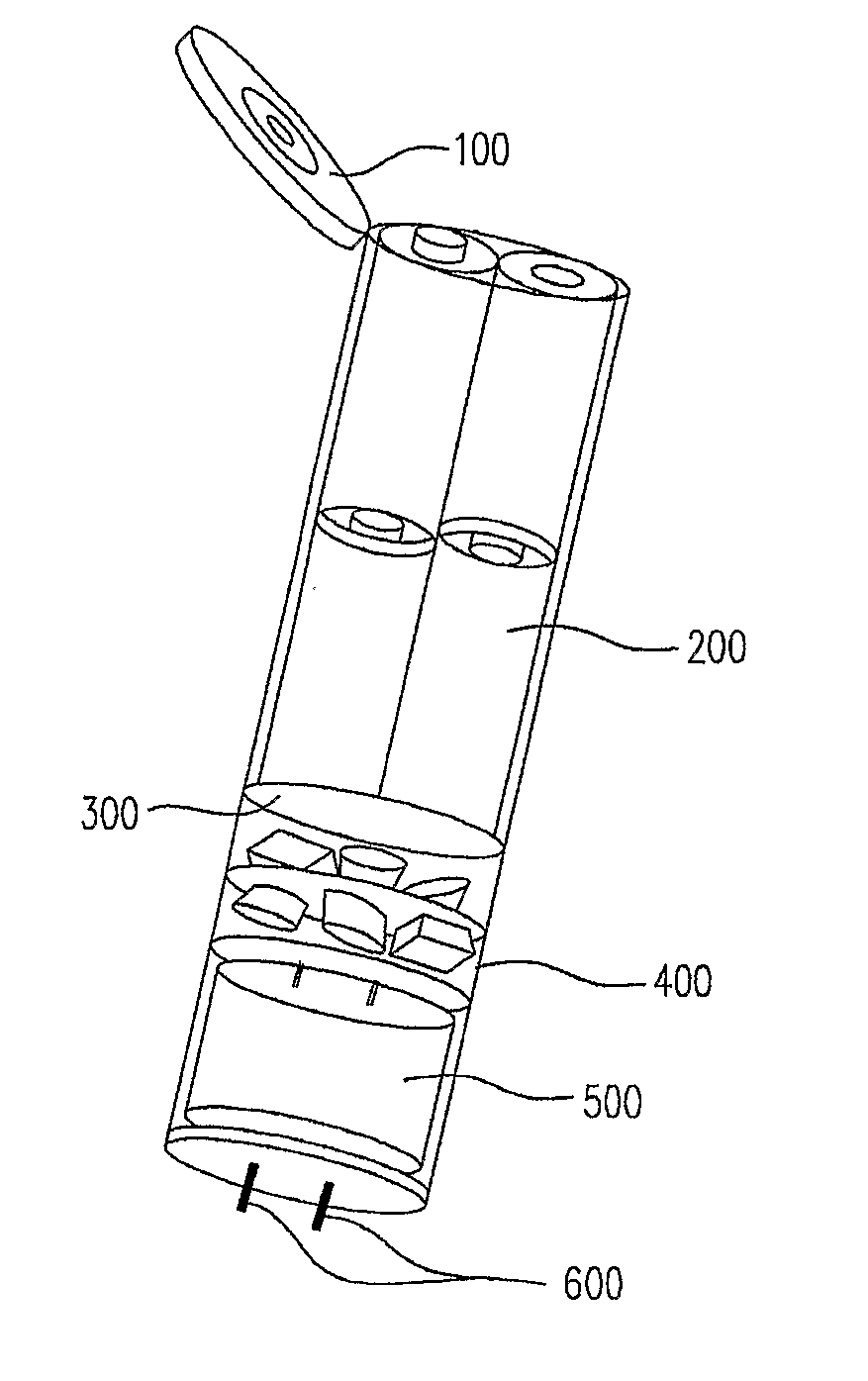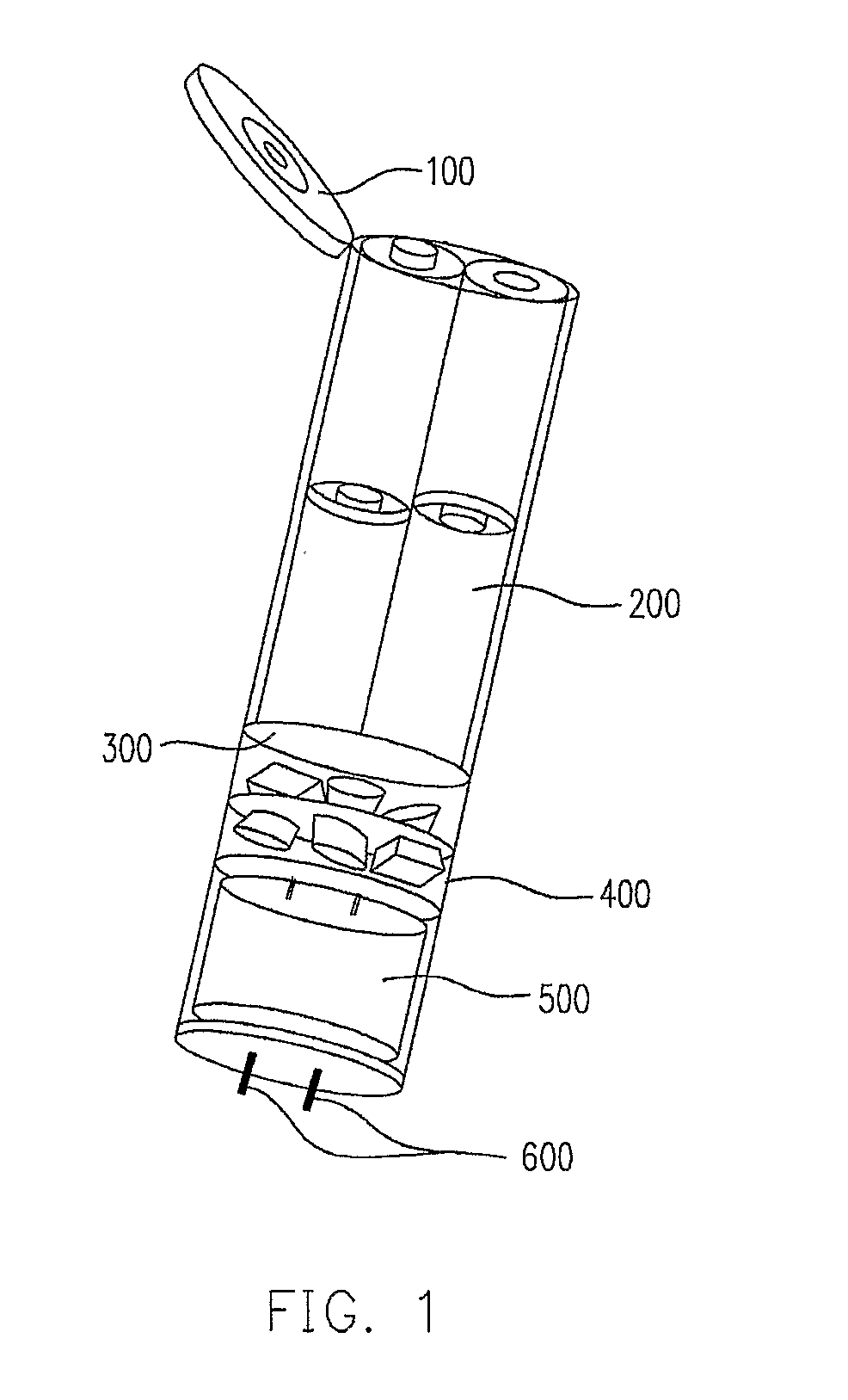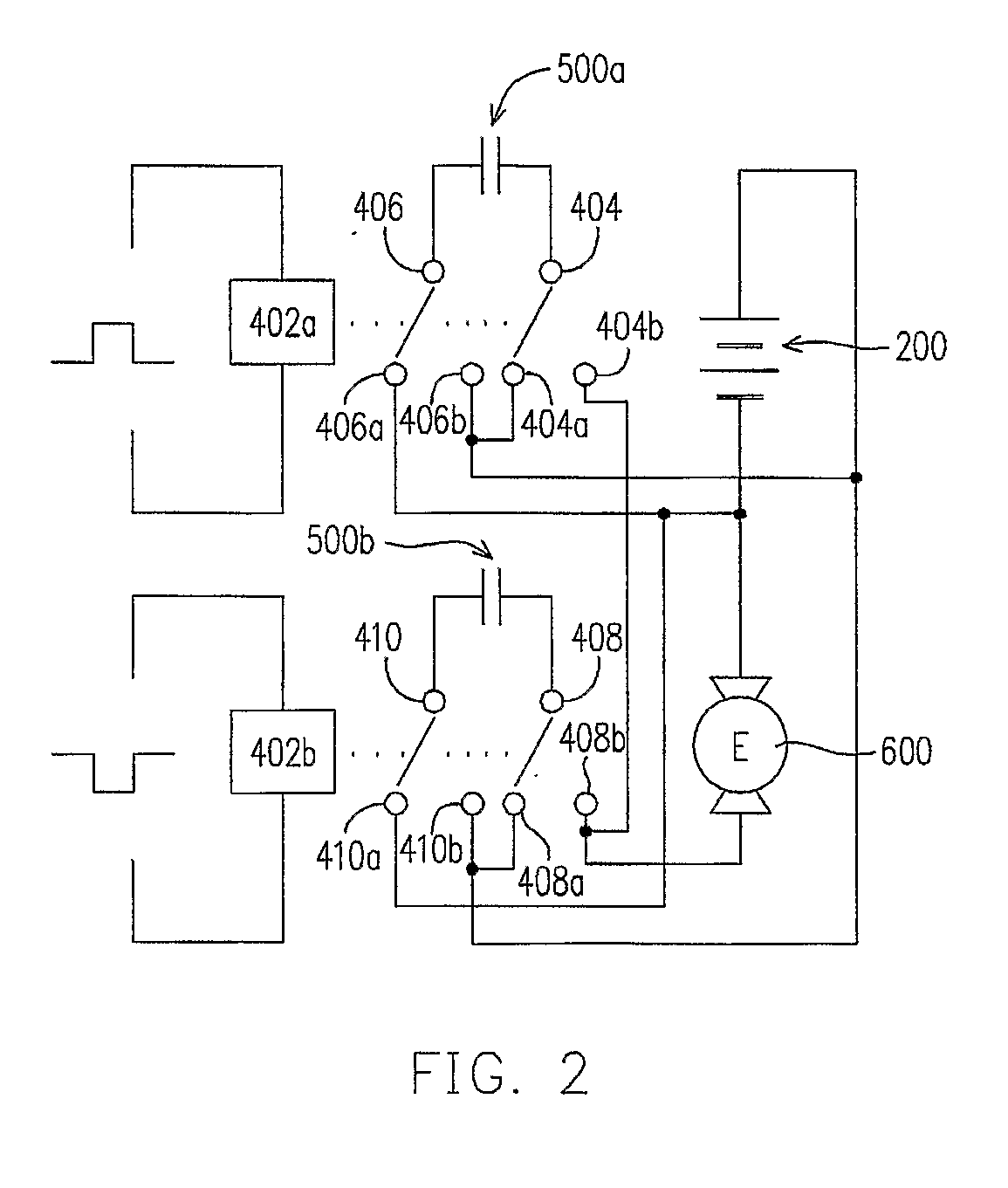Ozone generators
a generator and ozone technology, applied in the field of ozone generators, can solve the problems of increasing the total dissolved solids of the water treated by ocl, affecting the quality of the treated water, so as to achieve the effect of effective in-situ sterilization of the water, cost-effective, and easy portability
- Summary
- Abstract
- Description
- Claims
- Application Information
AI Technical Summary
Benefits of technology
Problems solved by technology
Method used
Image
Examples
example 1
[0090]A prototype ozone generator as shown in FIG. 1 may be manufactured using a pair of Pt-coated Ti mesh electrodes having the dimensions and configuration as depicted in FIG. 4. Four pieces of AA-size alkaline batteries are connected in series to form a 6V×2.78 Ah pack as the power source for providing electric energy to the two 5V×0.5 F supercapacitors. A switching circuit as shown in FIG. 2 is disposed between the batteries and the supercapacitors for managing the energy transfer between the two, as well as the charging and discharging swing of the supercapacitors. Once the CD swing is in operation, the power module composed of [batteries+switching circuit+supercapacitors] will output a voltage of about 11V DC. The aforementioned ozone generator was employed to perform in-situ sterilization on waters from two different sources, namely a faucet and a roadside ditch. Rather than the assessment of the inactivation of particular bacteria, the total quantity of bacteria killed in th...
example 2
[0115]A flow-through ozone reactors consisting of 4 pieces of Sb—Ni-doped SnO2 electrodes of 2″ diameter and 4 pieces of 2″-diameter stainless electrodes of 2″ diameter and 4 pieces of 2″-diameter stainless steel plates is constructed as FIG. 9, wherein 0.5 liter of water can fill the housing. The reactor is used for discoloration of 3 mg methylrosaniline chloride dispersed in 1 liter of tap water, and the solution is pumped with a circulation flow rate of 2.5 liter / minute through the reactor. Under 10 DC volt applied to the electrical terminals of anode and cathode stacks from a power supply, the blue dye is faded to colorless in 3 minutes. A current of 2 A is registered during the ozonation.
example 3
[0116]An ozone generator as FIG. 9 is prepared using a pair of Sb—Ni-doped SnO2 electrodes and 4 pieces of stainless steel electrodes in a rectangular configuration of 2 cm×4 cm. Four pieces of AA-size alkaline batteries are connected in series to form a 6V×2.78 Ah pack as the potential source of the generator for providing electric energy to two sets of 5V×0.5 F supercapacitor. A switching circuit as shown in FIG. 10 is disposed between the batteries and supercapacitors for managing the energy transfer between the two different devices, as well as the charging and discharging swing of supercapacitors. Once the CD swing is in operation, the power module composed of [batteries+switching circuit+supercapacitors] will output a voltage near 11V DC. The aforementioned O3 generator is employed to perform in-situ sterilization on waters from two sources, faucet and roadside ditch. Rather than the assessment of inactivation of particular bacteria, the total quantity of bacteria killed for t...
PUM
| Property | Measurement | Unit |
|---|---|---|
| operating voltage | aaaaa | aaaaa |
| capacitance | aaaaa | aaaaa |
| DC current density | aaaaa | aaaaa |
Abstract
Description
Claims
Application Information
 Login to View More
Login to View More - R&D
- Intellectual Property
- Life Sciences
- Materials
- Tech Scout
- Unparalleled Data Quality
- Higher Quality Content
- 60% Fewer Hallucinations
Browse by: Latest US Patents, China's latest patents, Technical Efficacy Thesaurus, Application Domain, Technology Topic, Popular Technical Reports.
© 2025 PatSnap. All rights reserved.Legal|Privacy policy|Modern Slavery Act Transparency Statement|Sitemap|About US| Contact US: help@patsnap.com



